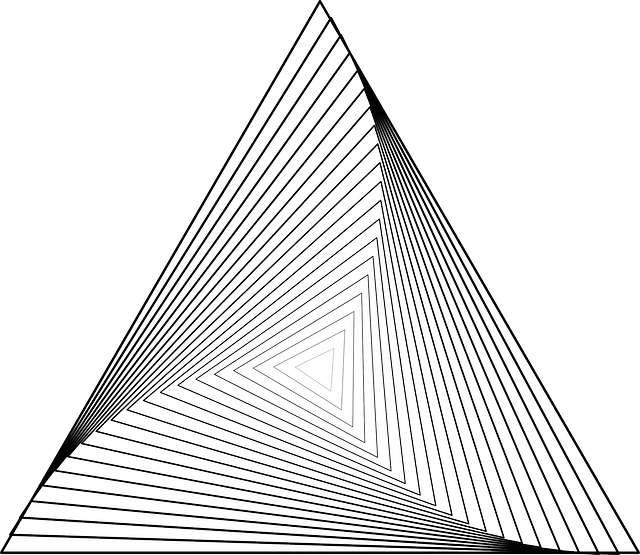
Geometry, a fundamental branch of mathematics, is responsible for studying the properties and relationships of geometric objects in space. Throughout history, mathematicians have developed various types of geometry to address different sets of concepts and applications.
In this article, we will explain the most relevant types of geometry, from traditional Euclidean geometry to the most advanced and specialized geometries.
Euclidean geometry
 Euclidean geometry, based on Euclid's postulates, is the best known and most widely taught type of geometry.
Euclidean geometry, based on Euclid's postulates, is the best known and most widely taught type of geometry.
This branch focuses on points, lines, angles, polygons and solids in the plane and space. His fundamental principles have been an essential basis for the development of modern geometry.
Example
A classic example is the geometry of a triangle in a plane, where the angles add up to 180 degrees and the sum of the lengths of two sides of a triangle is always greater than the length of the third side (triangular inequality).
Non-Euclidean geometry
Non-Euclidean geometries, such as hyperbolic and elliptical, are based on axioms different from those of Euclid.
They study geometries in which some Euclidean postulates are denied, leading to surprising and useful results in fields such as the geometry of curved space.
Differential geometry
Differential geometry uses differential calculus techniques to analyze the geometric properties of curves and surfaces. It plays a crucial role in the theory of relativity and in the description of natural and physical phenomena.
Analytic geometry
Analytical geometry combines geometry with algebra. It is commonly represented in Cartesian coordinates and is based on the application of algebra and mathematical analysis to study geometric objects.
This branch has had a profound impact on fields such as physics and engineering.
Algebraic geometry
Algebraic geometry combines geometric and algebraic concepts to study solutions of polynomial equations and their relationship with algebraic curves and surfaces.
This branch is fundamental in number theory and cryptography.
Computational geometry
Computational geometry focuses on the development of algorithms and methods to solve geometric problems using computation.
It has applications in robotics, computer graphics, and path planning, among other technological fields.
Example
An example is determining the intersection of two lines in a computer-aided design (CAD) program used in engineering.
Projective geometry
Projective geometry focuses on geometric properties that are invariant under projective transformations.
This branch is used to study the relationship between points, lines and projections in space, and is essential in artistic perspective and optics.
Example
An example would be the representation of a 3D scene in a 2D image, such as the projection of a three-dimensional object on a photograph.
Fractal geometry
Fractal geometry focuses on geometric objects that exhibit self-similarity at different scales.
Fractals are used to model complex natural and artificial patterns, such as the coastline of a continent or chaotic systems.
The Mandelbrot set is a famous example of a fractal. As you zoom in on different parts of the array, similar patterns are revealed at different scales.
Descriptive geometry
Descriptive geometry is used in the graphical representation of three-dimensional objects in two dimensions.
It is essential in architecture, engineering and industrial design, allowing the creation of precise technical plans and drawings.
Example
Creating a floor plan of a house with all its dimensions and technical details is an example of descriptive geometry.
Topological geometry
Topological geometry studies geometric properties that remain invariant under continuous deformations, such as connectivity and orientation. It is used in knot theory, algebraic topology, and data analysis.